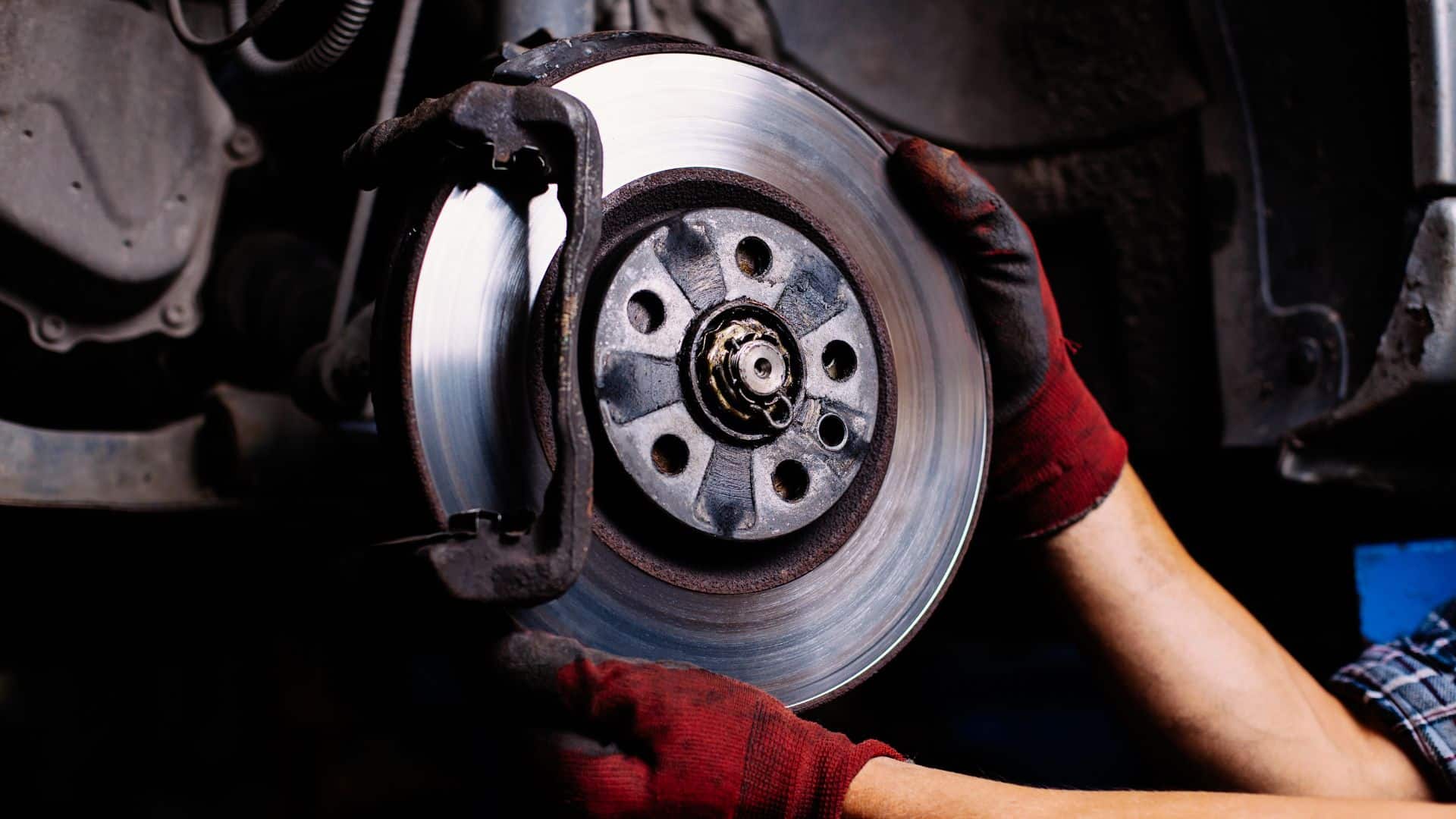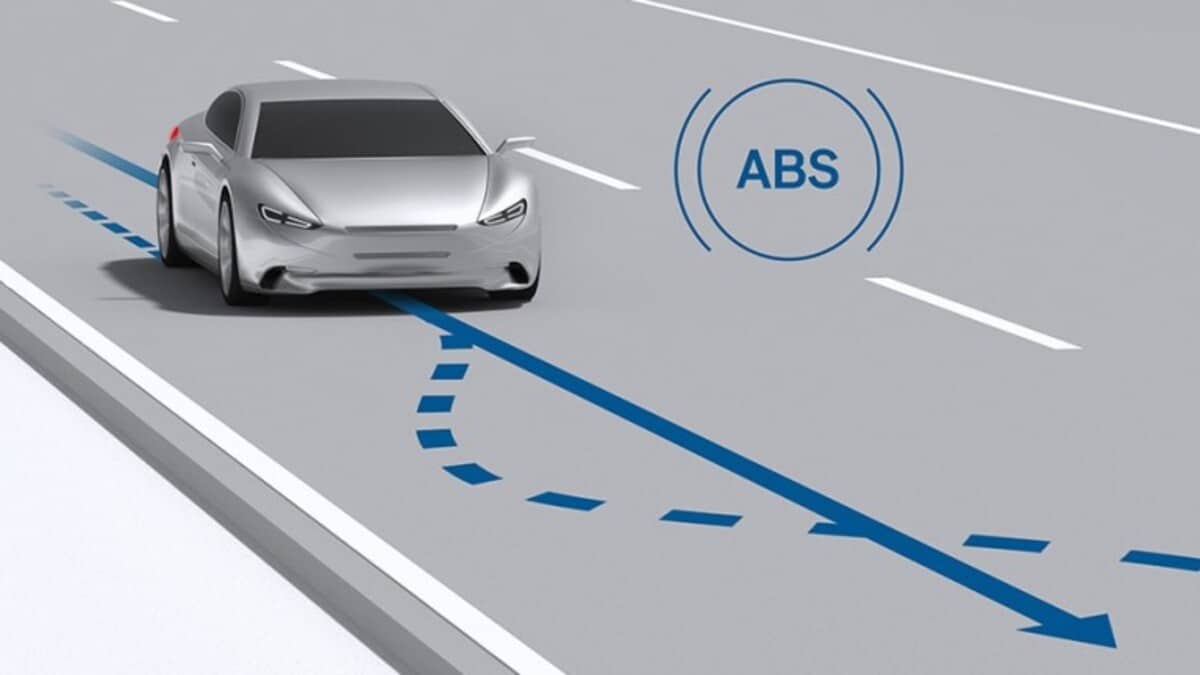Keeping your car’s brakes in top condition is crucial for safe driving.
Brake pads, in particular, play a vital role in ensuring smooth and reliable stopping power.
This blog post will provide expert tips and strategies to maximize the lifespan of your brake pads, saving you money and ensuring your vehicle’s braking system remains in optimal condition.
It will cover practical techniques, such as smooth driving habits, weight management, regular maintenance, etc.
By following these recommendations, you’ll learn how to extend the life of your brake pads on each wheel, enhancing your driving experience and promoting road safety.
Driving Habits to Ensure Longer Life of Brake Pads

Adopting smooth braking techniques is essential for extending the lifespan of your brake pads and enhancing overall vehicle safety.
By anticipating and responding to changing traffic conditions in a controlled manner, you can minimize the need for sudden, aggressive braking, which is a leading cause of premature brake pad wear.
Anticipating traffic flow is crucial for smooth braking.
Monitoring the road ahead and the behavior of other vehicles allows you to gradually reduce speed in advance, avoiding sudden braking and minimizing stress on brake pads.
This proactive approach ensures better traffic awareness and reduces the risk of rear-end collisions.
- Maintaining a safe following distance is another important aspect.
- When you maintain a minimum of three seconds between your vehicle and the one in front, you can coast to a gradual stop without slamming the brakes. In adverse weather or low-visibility conditions, increasing this distance prevents skidding and reduces avoidable collisions.
- Using engine braking reduces speed without relying solely on the brake pads.
Downshifting to a lower gear allows the engine to assist in braking in manual transmission vehicles or those with selectable gear modes.
This technique reduces brake pad wear, especially on steep hills or slowing down at high speeds.
Engine braking also ensures more predictable braking when carrying heavy loads.
1. Scan the Road Ahead
Adopting a proactive approach to driving is key to minimizing excessive brake wear.
Remain vigilant by continuously scanning the road ahead for potential hazards, traffic pattern changes, or situations that may require adjustments to your speed.
By anticipating these circumstances early, you can gradually decelerate well in advance, avoiding the need for sudden, forceful braking that accelerates brake pad deterioration.
2. Coast to a Stop
Whenever possible, try to avoid coming to an abrupt stop.
When approaching stop signs or red lights, take your foot off the accelerator pedal early and allow the vehicle to coast, gradually slowing down through engine braking.
As you near the complete stop, apply gentle, progressive braking to bring the car to a smooth halt.
This technique minimizes the intense friction and heat that can rapidly wear down brake pads.
3. Downshift for Long Descents
Long descents or situations where you need to slow down from higher speeds present an opportunity to engage engine braking effectively.
In manual transmission vehicles or those with selectable gear modes, downshift to a lower gear, allowing the engine to provide additional braking force.
This technique can significantly reduce the workload on your brake pads, preventing excessive wear and heat buildup during prolonged deceleration.
4. Maintain Ample Space
In heavy traffic or stop-and-go conditions, leaving ample space between your vehicle and the one ahead is crucial.
Maintaining a safe following distance improves safety and allows you to coast to a smooth stop without sudden, aggressive braking.
This practice minimizes the strain on your brake pads and ensures a more controlled, gradual deceleration, extending their lifespan.
5. Smooth Braking Habits
Adopting smooth braking techniques is essential for extending the lifespan of your brake pads and enhancing overall vehicle safety.
By anticipating and responding to changing traffic conditions in a controlled manner, you can minimize the need for sudden, aggressive braking, which is a leading cause of premature brake pad wear.
Anticipating traffic flow is crucial for smooth braking.
Monitoring the road ahead and the behavior of other vehicles allows you to gradually reduce speed in advance, avoiding sudden braking and minimizing stress on brake pads.
This proactive approach ensures better traffic awareness and reduces the risk of rear-end collisions.
- Maintaining a safe following distance is another important aspect.
- When you maintain a minimum of three seconds between your vehicle and the one in front, you can coast to a gradual stop without slamming the brakes.
- In adverse weather or low-visibility conditions, increasing this distance prevents skidding and reduces avoidable collisions. Using engine braking reduces speed without relying solely on the brake pads.
Downshifting to a lower gear allows the engine to assist in braking in manual transmission vehicles or those with selectable gear modes.
This technique reduces brake pad wear, especially on steep hills or slowing down at high speeds.
Engine braking also ensures more predictable braking when carrying heavy loads.
6. Defensive Driving Practices
To effectively practice defensive driving and reduce strain on your brakes, consider these tips:
- Hazard Recognition and Avoidance: Vigilance is essential to identifying road hazards that require careful driving, such as potholes, debris, or poor weather conditions.
- Reduced Braking Frequency: Avoid high-speed driving and rapid lane changes, which necessitate frequent, intense braking and accelerating brake pad wear.
- Maintain a Safe Following Distance: Leave ample space between your vehicle and the one in front to reduce sudden braking needs.
- Anticipate and React: Continuously scan the road ahead, anticipating actions by other drivers or changes in road conditions so you can smoothly adjust speed or lane position.
- Avoid Distractions: Focus on the road and avoid activities that can divert attention, hindering your ability to anticipate and react to potential hazards.
Vehicle Maintenance: Regular Brake Inspections for Peace of Mind

Regular vehicle braking system inspections are vital for ensuring road safety.
Brakes are crucial safety components; even minor issues can have severe consequences if left unchecked.
By inspecting your brakes proactively, you can detect and address problems early before they escalate.
1. Pad Thickness: A Crucial Checkpoint
- Check the remaining thickness of your brake pads regularly and replace them before they wear down to the backing plate.
- As the friction material thins, braking performance deteriorates, leading to longer stopping distances and potential safety hazards.
- Monitoring pad thickness allows you to schedule timely replacements and maintain optimal braking capabilities.
2. Caliper Inspection: Ensuring Proper Function
- Inspect the calipers for proper function, signs of fluid leaks, and visible damage.
- Calipers play a vital role in applying the necessary clamping force on the brake pads.
- Malfunctioning or damaged calipers can lead to uneven brake pad wear, reduced braking efficiency, and potential brake system failures.
- Regular caliper inspections are essential for identifying and addressing any issues promptly.
3. Rotor Evaluations: Preserving Braking Power
- Look for excessive wear patterns, scoring, or warping on your brake rotors, as these conditions can impair braking performance.
- Rotors provide the surface against which the brake pads create friction to slow down the vehicle.
- Worn or damaged rotors can cause vibrations, increased stopping distances, and decreased braking ability, posing a safety risk.
4. Brake Fluid: The Lifeblood of Your Braking System
- Ensure adequate brake fluid levels and check for discoloration or contamination.
- Brake fluid transmits the force from the brake pedal to the calipers, enabling the braking action.
- Low or contaminated fluid levels can reduce braking effectiveness, spongy pedal feel, and potential brake system failures.
5. Hose and Line Integrity: Safeguarding Against Leaks
- Examine all brake hoses and lines for cracks, leaks, or other damage that could compromise the brake system’s integrity.
- These components carry the brake fluid from the master cylinder to the calipers.
- Any damage or leaks can result in fluid loss, decreased braking power, and potential brake failure.
Choosing the Right Brake Pads for Optimal Performance and Longevity
1. High-Quality Pads
Investing in high-quality brake pads is crucial for ensuring reliable braking performance and maximizing the lifespan of these critical components.
While budget options may initially seem like a cost-effective solution, they often compromise durability and effectiveness, leading to more frequent replacements and potential safety concerns.
When selecting new brake pads, consider upgrading to premium materials such as ceramic or semi-metallic options.
2. Ceramic Brake Pads
- Provide excellent heat dissipation capabilities.
- Reduce the risk of brake fade and premature wear.
- Produce minimal dust for cleaner wheels and brake components.
- It is ideal for everyday driving, especially in urban or stop-and-go traffic scenarios.
3. Semi-metallic Brake Pads
- Higher metallic content offers exceptional stopping power and wear resistance.
- Generate more brake dust than ceramic pads.
- Excel in heavy-duty applications where consistent, reliable braking is crucial.
By leveraging this information, mechanics can recommend brake pads that balance performance, durability, and cost-effectiveness.
Anti-Lock Braking System for Precise Braking

Your vehicle’s Anti-lock Braking System (ABS) ensures safe and controlled stops, especially in challenging road conditions.
The ABS sensors and electronics work together to prevent wheel lockup, allowing you to maintain steering control and stability during emergency braking situations.
Keeping this system in proper working order maximizes brake performance and overall safety.
Step-by-Step Guide for Checking ABS Sensors
The ABS sensors at each wheel hub monitor wheel speed and trigger the ABS when necessary.
To inspect and maintain these sensors, follow these steps:
- Locate the ABS sensor on each wheel hub near the brake rotor.
- Inspect the sensor for any physical damage, corrosion, or debris buildup.
- Use a clean cloth or compressed air to gently remove contaminants from the sensor area.
- If any damage is detected, consult a professional for potential sensor replacement.
Troubleshooting Common Issues
- If your ABS warning light is illuminated, it could indicate various issues.
- Common error codes may relate to faulty sensors, wiring problems, or issues with the ABS control module.
- While some simple problems can be resolved through basic troubleshooting, it is generally recommended that a professional diagnose and repair any significant ABS issues.
Maintenance Tips to Prevent ABS Failures
To help prevent ABS failures and extend the life of your braking system, follow these maintenance tips:
- Keep the sensor areas clean and free from debris or excessive brake dust buildup.
- Ensure all wiring connections to the ABS sensors and control module are secure and undamaged.
- Have your ABS professionally inspected regularly, especially if you frequently drive in harsh conditions or off-road.
By staying proactive with ABS maintenance, you’ll enjoy improved braking performance and increase the overall safety and longevity of your vehicle’s braking components.
Comparative Analysis Between the Two Types of Brakes
| Aspect | Conventional Brakes | Anti-lock Braking Systems (ABS) |
|---|---|---|
| Operation | Brake pads clamp down on rotors to create friction and slow the vehicle’s wheels. | Sensors monitor wheel speed, and the system pulses brakes to prevent wheel lockup. |
| Key Components | – Brake pads – Rotors – Calipers – Hydraulic fluid lines |
– Wheel speed sensors – Hydraulic control unit – Electronic control module |
| Benefits | – Simple maintenance – Reliable stopping power |
– Enhanced safety – Prevents wheel lockup – Maintains steering control |
| Maintenance Needs | – Inspect brake pads and rotors regularly – Replace brake fluid periodically |
– Same needs as conventional brakes – Check sensors and run diagnostics – Verify wiring and connections |
| Cost Implications | Lower maintenance costs due to simpler diagnostics and parts | Higher maintenance costs due to complex diagnostics and sensor replacements |
| Best Suited For | Drivers who prefer simplicity and are familiar with traditional braking behavior | Drivers who prioritize safety and control in varied conditions or those driving modern vehicles with ABS standards |
Summing Up
In conclusion, extending your brake pads’ life is cost-effective and crucial for maintaining safe and reliable braking performance.
By implementing the expert tips we’ve covered, such as smooth driving techniques, proper weight management, regular inspections, and timely replacements, you can maximize the longevity of your brake pads and ensure your vehicle’s braking system operates at its best.
Investing in high-quality brake components and seeking professional guidance can help ensure optimal brake pad life.
Don’t compromise on safety; take action today to adopt these practices and enjoy peace of mind on every journey.
What’s next?
Share your own brake maintenance experiences and tips in the comments below!


